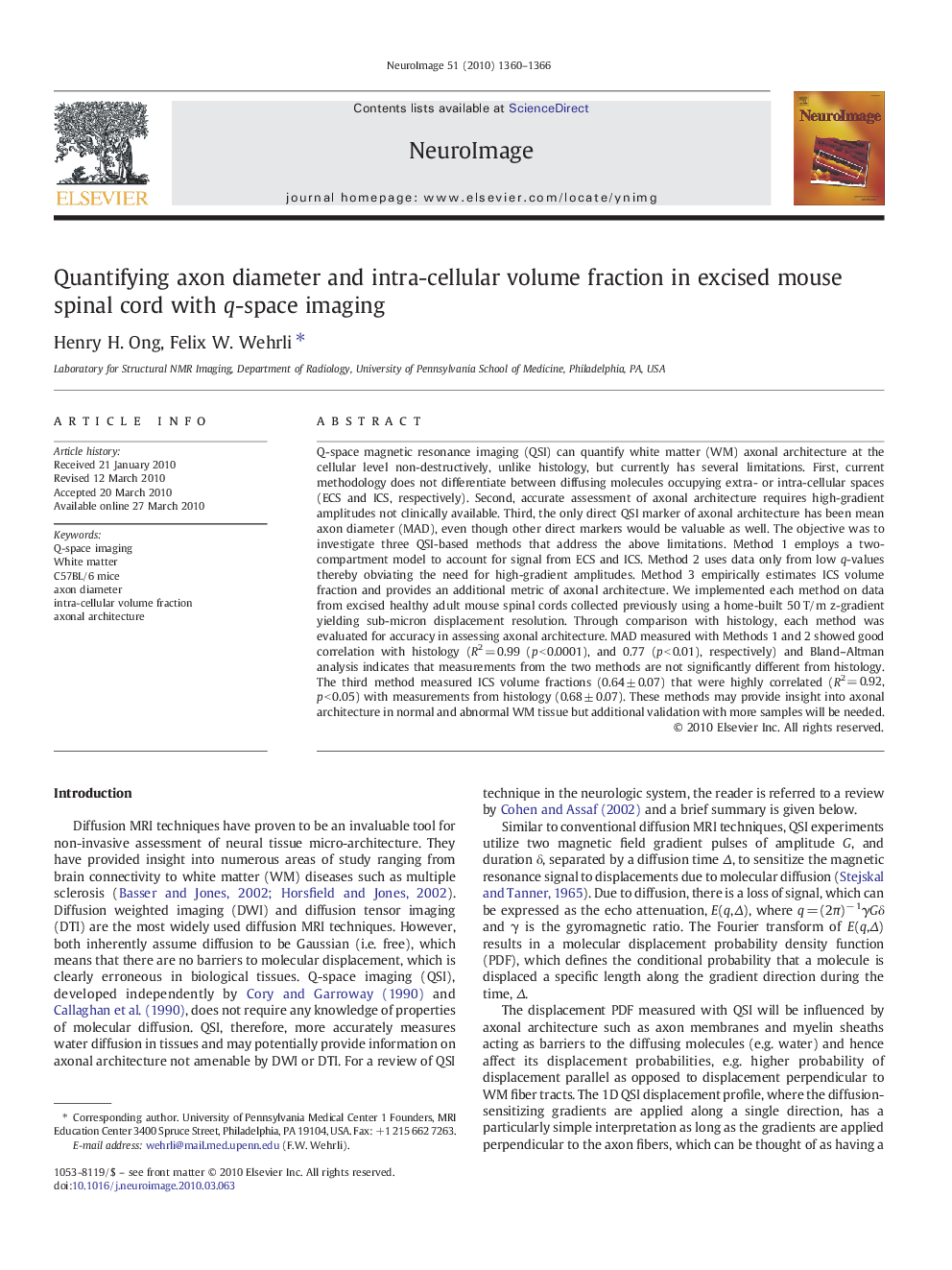| Article ID | Journal | Published Year | Pages | File Type |
|---|---|---|---|---|
| 6035813 | NeuroImage | 2010 | 7 Pages |
Q-space magnetic resonance imaging (QSI) can quantify white matter (WM) axonal architecture at the cellular level non-destructively, unlike histology, but currently has several limitations. First, current methodology does not differentiate between diffusing molecules occupying extra- or intra-cellular spaces (ECS and ICS, respectively). Second, accurate assessment of axonal architecture requires high-gradient amplitudes not clinically available. Third, the only direct QSI marker of axonal architecture has been mean axon diameter (MAD), even though other direct markers would be valuable as well. The objective was to investigate three QSI-based methods that address the above limitations. Method 1 employs a two-compartment model to account for signal from ECS and ICS. Method 2 uses data only from low q-values thereby obviating the need for high-gradient amplitudes. Method 3 empirically estimates ICS volume fraction and provides an additional metric of axonal architecture. We implemented each method on data from excised healthy adult mouse spinal cords collected previously using a home-built 50 T/m z-gradient yielding sub-micron displacement resolution. Through comparison with histology, each method was evaluated for accuracy in assessing axonal architecture. MAD measured with Methods 1 and 2 showed good correlation with histology (R2 = 0.99 (p < 0.0001), and 0.77 (p < 0.01), respectively) and Bland-Altman analysis indicates that measurements from the two methods are not significantly different from histology. The third method measured ICS volume fractions (0.64 ± 0.07) that were highly correlated (R2 = 0.92, p < 0.05) with measurements from histology (0.68 ± 0.07). These methods may provide insight into axonal architecture in normal and abnormal WM tissue but additional validation with more samples will be needed.
